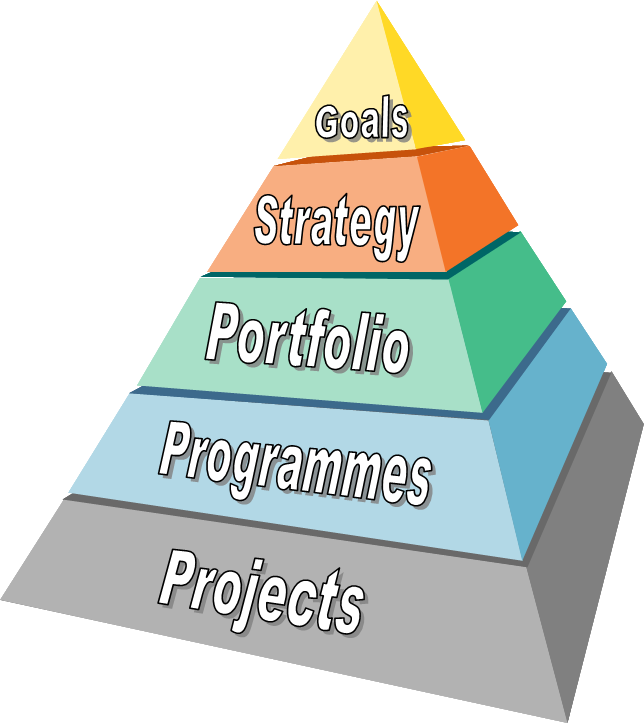“But we do have a Portfolio Management!” recently claimed a CIO, who couldn’t understand why his projects permanently struggled from resource issues. Definitely: Portfolio Management (PPM) serves to utilize scarce resources – probably the usual case – at a maximum of business benefits. Benefits are measured by the contribution to achieve (strategic) business goals. But PPM is not a tool but a transparent and consistent process by which the portfolio is managed (which can be supported by a tool). And this needs to be consequently applied if it is to help !

I’d like to show three missed prerequisites as reasons why in my example here the PPM was to fail:
- Who wants to meet objectives needs to have such ! And they need to be harmonically coordinated, e.g. with a Balanced Scorecard or categories like long-term (such as growth, market position etc.) and short-term goals (e.g. innovation, market entry etc.) and sustainability. If strategic objectives compete or even contradict the portfolio will not be efficient, and also will not achieve it’s targets effectively.
- Prioritize – and keep with it ! Following the priorities the resources are to be assigned to the projects, not opportunistic or because someone is yelling louder. That doesn’t mean it would be impossible to change priorities due to better insight, but changing direction frequently doesn’t help achieving targets.
- Never do more than you can ! Those are doing right who do the yearly planning for the project pipeline by matching the planned capacities with the desired projects’ efforts in sequence of their priority. But if you find you also urgently need X, Y and Z to be done (on top), and you add further initiatives during the course of the year, you will overwhelm your organization’s capabilities and capacity for suffering. And you don’t need to wonder why not more but less than planned is finished…
I wish that more managers in the C-Suite would self-limit their “flexibility” and “autonomy of decision” in favor of comprehensible decision processes and a realistic discipline of expectations, thus increasing their business results effectively and efficient by a structured PPM. And by the way they will strengthen their employees’ motivation and significantly improve projects’ results (time, cost, quality, business benefits).
Learn more about implementing Project Portfollio Management accurately…
